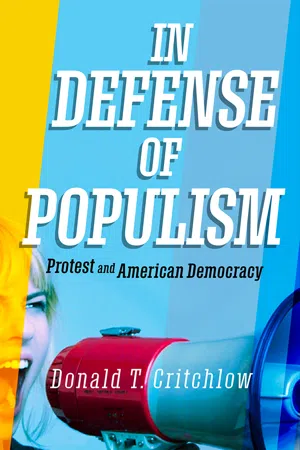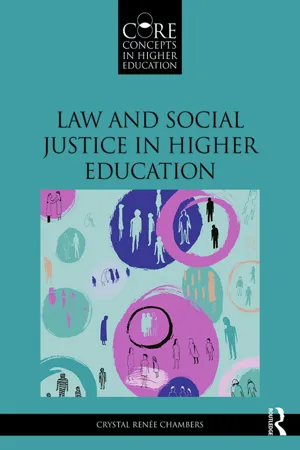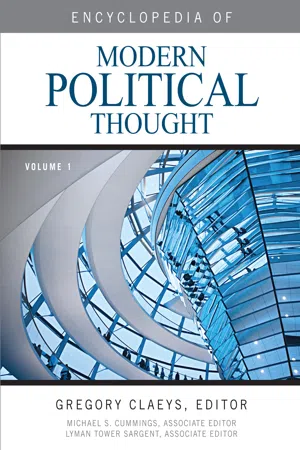History
Civil Rights Activists
Civil rights activists are individuals who advocate for the rights and equality of all people, particularly in the context of race, gender, and other social categories. They often engage in nonviolent protests, advocacy, and legal action to challenge discriminatory practices and policies. Civil rights activists have played a crucial role in shaping laws and societal attitudes towards equality and justice.
Written by Perlego with AI-assistance
Related key terms
3 Key excerpts on "Civil Rights Activists"
- eBook - ePub
In Defense of Populism
Protest and American Democracy
- Donald T. Critchlow(Author)
- 2020(Publication Date)
- University of Pennsylvania Press(Publisher)
Those grassroots activists who engaged in the struggle to achieve the American creed that all men and women are created equal showed courage by putting themselves on the line. Even more courageous were the local residents, clergy, and average folks who enlisted in the struggle for their rights. The struggle was not without internal division, and many local projects failed more often than they succeeded. Confronted by racial violence and massive resistance, many young black and white activists turned in the mid-1960s to more radical agendas and rejected King’s call for nonviolent struggle.In the halls of Congress, the passage of the Civil Rights Act of 1964 and the Voting Rights Act of 1965 provided legal protection for black Americans, as well as other groups faced with discrimination, including women, ethnic minorities, the aged, and religious groups. A broad rights revolution blossomed in America as other groups engaged in grassroots struggles to achieve their rights. The politics of the street set the context for legislative achievement and applied pressure on politicians, Republicans and Democrats alike, to support civil rights legislation. By the end of the 1960s, both political parties had endorsed civil rights in various ways. The northern-based Republican Party endorsed black civil rights earlier than did the southern-based Democratic Party, but under pressure exerted by Civil Rights Activists, both parties stood in favor of black civil rights.The struggle for civil rights at midcentury had deep roots in modern America. At the turn of the century, such black leaders as Harvard-educated W. E. B. Du Bois joined other activists to form the Niagara movement to protest passage of Jim Crow laws in the South in the 1890s, which disenfranchised black voters and legalized segregation of blacks in public places. In the 1920s and 1930s, activists protested racism in Hollywood, lynching in the South, and mistreatment of black Americans generally. World War II brought further struggle for black civil rights. Threats by A. Philip Randolph, founder and head of the Sleeping Car Porters, to organize a march on Washington demanding the end of discrimination in defense industries led President Franklin Roosevelt to respond by issuing Executive Order 8802 banning employment discrimination in wartime industries. In 1942, white and black Civil Rights Activists involved in the pacifist organization Friendship of Reconciliation, in which A. J. Muste played a leading role, formed the Congress of Racial Equality (CORE). The new organization pledged to use nonviolent resistance to end racial segregation. - eBook - ePub
- Crystal Renée Chambers(Author)
- 2016(Publication Date)
- Routledge(Publisher)
5 Student Activism and Institutional Transformation Off campus and on, acts of massive resistance juxtaposed nonviolent civilians against violent state actors, generating photo memories of the 1960s:… burning busses in 1961; the hate-filled distorted face on white housewives in New Orleans; fire hoses, dogs, and beatings in Montgomery, Birmingham, Selma, and other places; Sheriffs Bull Conner and Lawrence Rainey; James Meredith at Ole Miss in 1962; George Wallace at the University of Alabama in 1963.(Gamson, 1978, p. 15)College students across racial lines and institutional types were key actors, often depicted as foot soldiers of the civil rights struggle (Lovett, 2011; cf. Williamson, 2008). But they also contributed to changes that were fundamental to the organizational structure and institutional culture. No part of campus went untouched—academic affairs, student affairs, even business affairs bear the mark of this era.This chapter begins with a discussion of social movements, with a specific focus on the civil rights movement and the rise of student-led activism. The initial focus of student activism was civil rights in society more broadly, beginning with desegregation but then turning towards inclusion with the joinder of Latino/a, Native and Asian American rights. By the end of the 1960s, student energies were focused inward, on campus, and transformed colleges and universities into a form we now experience. - eBook - ePub
- Gregory Claeys(Author)
- 2013(Publication Date)
- CQ Press(Publisher)
Morris also argues that later civil rights movements learned from the techniques of mass mobilization and nonviolent direct action used in the African American Civil Rights Movement, and during the 10 years after 1965, were remarkably successful in achieving their goals by applying these methods. He sees the African American civil rights movement from 1954 to 1965 as a model and an inspiration to movements addressing gender, race/ethnicity, sexuality, and the rights of persons with disabilities. Forms of nonviolent direct action, such as sit-ins, Freedom Rides, marches, and various demonstrations, were modeled on those of Mahatma Gandhi and applied Gandhian techniques to African American civil rights movements of the late 1950s and early 1960s. Without the techniques developed during these movements and the inspiration of their successes, it is hard to imagine the successes that the many other civil rights movements subsequently achieved after 1965.The era of mass civil rights activism is over for now, but it has led to major improvements in the civil rights of African Americans, Indigenous peoples, women, Hispanics, the disabled, and the GLBT community. Although progress often entailed significant human costs, and some progress has been lost, the current high levels of civil rights for these historically oppressed populations would have seemed inconceivable 50 years ago.Stephen C. ThomasSee also Affirmative Action ; Civil Disobedience ; Equality and Egalitarianism ; King, Martin Luther, Jr. ; Rights, Natural and HumanFurther Readings
Adam , B.1987 . The Rise of a Gay and Lesbian Movement. Boston : Twayne .Branch , T.1988 . Parting the Waters: America in the King Years. New York : Simon and Schuster .Carson , C.1981 . In Struggle: SNCC and the Black Awakening of the 1960s. Cambridge : Harvard University Press .Davis , A.1981 . Women, Race and Class. New York : Random House .Du Bois , W. E. B
Learn about this page
Index pages curate the most relevant extracts from our library of academic textbooks. They’ve been created using an in-house natural language model (NLM), each adding context and meaning to key research topics.


